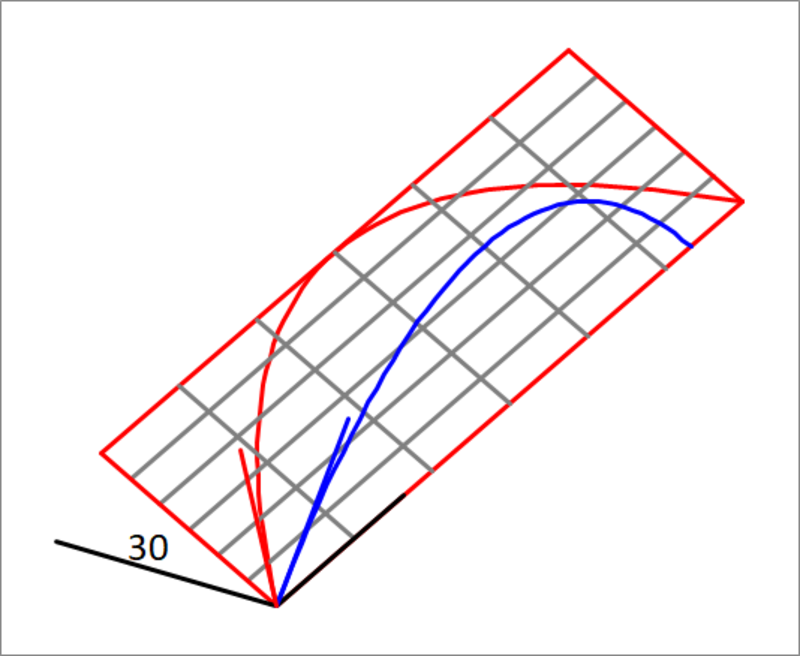Projectile Motion Comparison - 4
Two solid balls are thrown from the same point with the same linear speed of their centers, the first freely at an angle of with the horizontal, and the second is sent on an inclined plane, with its initial velocity vector making an angle of with the horizontal edge of the plane. The second ball is purely rolling on the inclined plane. How do the maximum altitudes of the two balls compare ? The inclined plane makes an angle of with the horizontal ground. If is the maximum altitude of the first ball, and is the maximum altitude of the second ball, what is the relation between and ?
The attached figure depicts the two projectiles. The figure is not drawn to scale.

This section requires Javascript.
You are seeing this because something didn't load right. We suggest you, (a) try
refreshing the page, (b) enabling javascript if it is disabled on your browser and,
finally, (c)
loading the
non-javascript version of this page
. We're sorry about the hassle.
First case :
H 1 = 4 g u 2 .
Second case :
Acceleration is 1 4 5 g along the line of greatest slope of the inclined plane.
Component of initial velocity along this line is 2 u and
along the horizontal line is also 2 u .
So, H 2 = 2 × 1 4 5 g 2 u 2 × sin 3 0 ° = 2 0 g 7 u 2 .
Therefore H 2 = 1 . 4 H 1
Solution to the fifth problem of this series :
R 1 = g u 2 .
Since the kinetic energies in the two cases are the same, v 2 = 7 5 u 2 , where v is the initial velocity in the second case.
So, R 2 = 1 4 5 g v 2 = 7 5 u 2 × 5 g 1 4 = 2 g u 2 .
Therefore R 2 = 2 R 1
Your problems are really good Hosam Hajjir